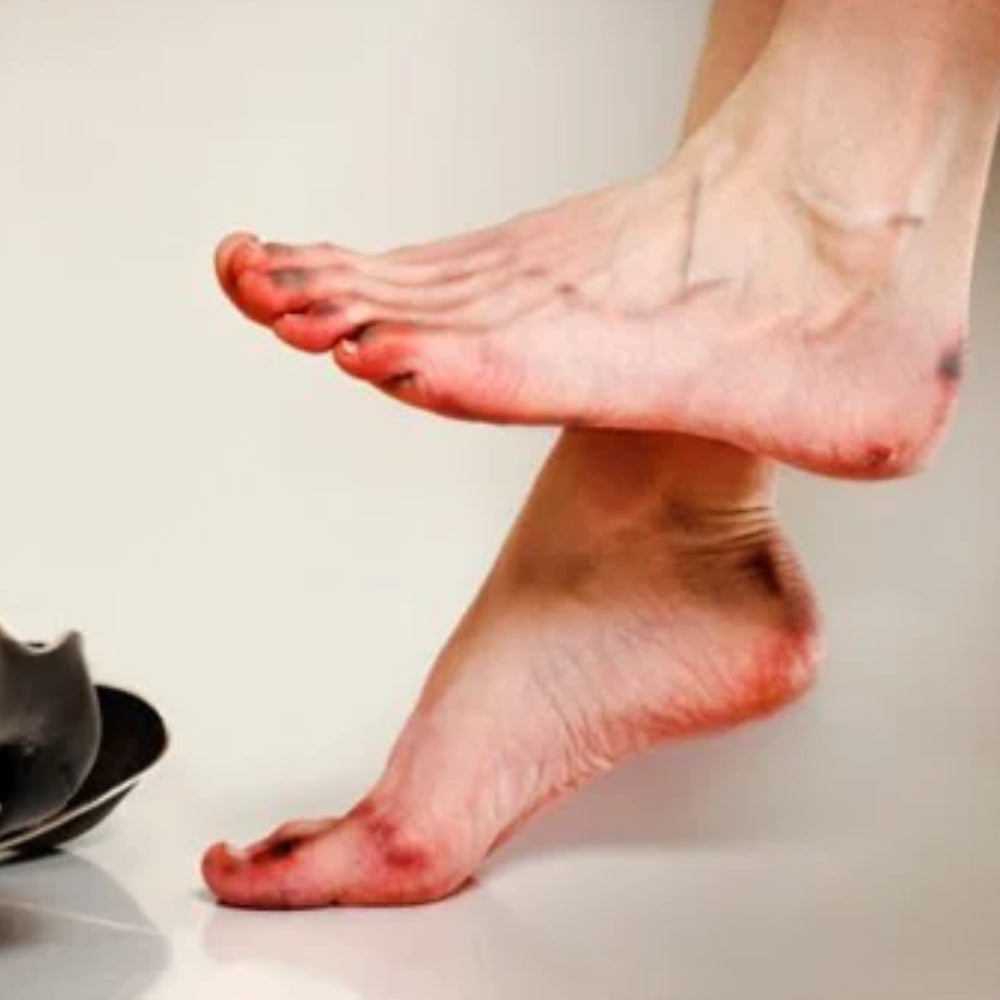Shoes are an indispensable part of our daily lives. They not only protect our feet but also contribute to creating a unique fashion style. However, many people often make mistakes when choosing shoes, especially wearing tight shoes. So is wearing tight shoes okay ? This article Shondo Blog will analyze in detail the potential harms of wearing tight shoes and guide you on how to choose the right shoes to protect your feet's health.
Is it okay to wear tight shoes?
Wearing tight shoes puts a lot of pressure on the toes, causing the toenails to grow into the skin, affecting the health of the feet. Many people often subjectively think that wearing tight shoes only causes temporary discomfort, but in fact, it can lead to other serious long-term effects such as:
Causes pain and fatigue in legs
This is the most obvious harm when wearing tight shoes. Tight shoes will squeeze the toes, feet and heels, causing pain, numbness, and tired feet. If this condition persists, it can affect mobility and quality of life.
Toe deformity
Tight shoes force the toes together in a small space, causing them to become deformed and crooked, affecting the aesthetics and motor function of the foot. Some common toe deformities caused by wearing tight shoes include:
- Flat feet: Tight shoes destroy the natural arch of the foot, causing the foot to become flat, prone to pain and fatigue when walking a lot.
- Big toe deviation: The big toe is pushed to one side, toward the other toes, forming an angle, even overlapping the second toe.
- Hammertoes: The toes are bent downward, resembling the shape of a hammer toe.
- Hammer toe: The toe joints are deformed, bent upward, resembling the shape of a hammer.
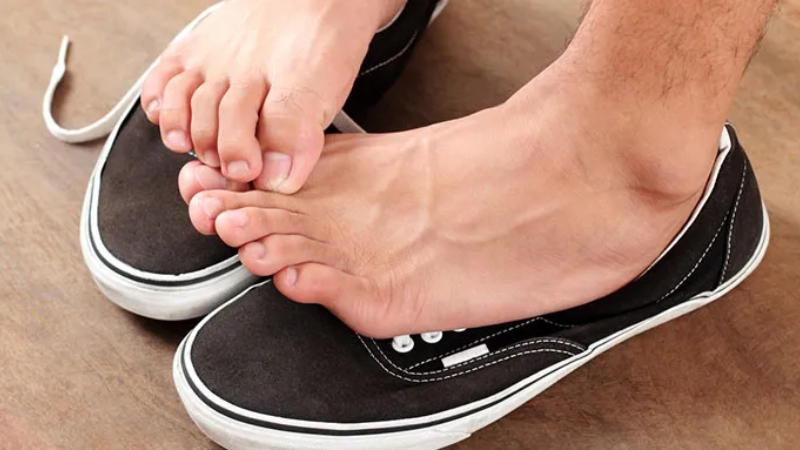 Is it okay to wear tight shoes? It can cause deformed toes[/caption]
>>>See more: What shoes should flat feet wear ?
Is it okay to wear tight shoes? It can cause deformed toes[/caption]
>>>See more: What shoes should flat feet wear ?
Calf callus formation
Constant friction between tight shoes and the skin of the feet stimulates the growth of calluses, forming hard, painful calluses on the heels, balls of the feet, or toes. Corns can also appear due to damaged and inflamed soft tissues.
Causes ingrown nails
Tight shoes squeeze the toes, preventing toenails from growing normally, making them prone to curling and growing back into the skin, causing pain and infection.
Effects on blood circulation
Tight shoes impede blood circulation in the feet, causing cold, numb, and even swollen feet. This condition, if prolonged, can affect the health of the entire body.
Increased risk of foot diseases
Wearing tight shoes regularly increases the risk of foot diseases such as arthritis, tendonitis, osteoarthritis, peripheral neuropathy,...
Signs that you are wearing tight shoes
To prevent the harmful effects of tight shoes, you need to recognize early signs that you are wearing shoes that do not fit your feet.
- Pain, Numbness in Legs
If you often feel pain, numbness in your toes, feet, and heels after wearing shoes, especially when walking a lot, it is a sign that your shoes are too tight.
[caption id="attachment_5116" align="aligncenter" width="800"]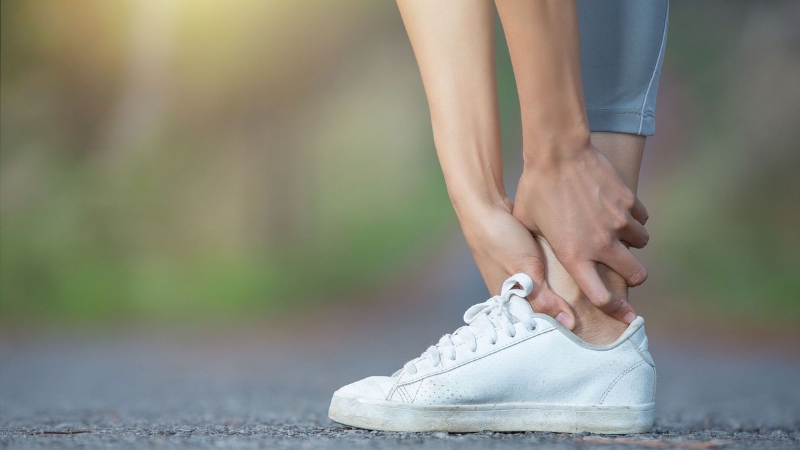 Foot pain and numbness are signs of wearing shoes that are too tight[/caption]
Foot pain and numbness are signs of wearing shoes that are too tight[/caption]
- Deformed Toes
Take a close look at your toes. If they appear crooked, slanted to one side, or overlapping, these are signs that your shoes are too tight.
- Calf Calluses, Foot Calluses Appear
If you notice hard, painful calluses on your heels, balls of your feet, or toes, it's a sign that your shoes are rubbing too much against the skin of your feet.
- Ingrown Toenail
Ingrown toenails are one of the common side effects of wearing tight shoes. If you notice your toenails are curling, growing into the skin, causing pain, or inflammation, consider your shoe size.
- Cold, Numb, Swollen Feet
Tight shoes can restrict blood circulation in your feet, causing them to feel cold, numb, or even swollen. If you experience these symptoms, pay attention to your shoe size.
How to choose the right shoes to protect your feet's health
To avoid the harmful effects of wearing tight shoes, you need to know how to choose shoes that fit your feet.
Measure Your Foot Size Accurately
Before buying shoes, measure your feet accurately. You can measure yourself at home with a tape measure or go to shoe stores to have a professional staff advise and measure your feet.
[caption id="attachment_5117" align="aligncenter" width="800"]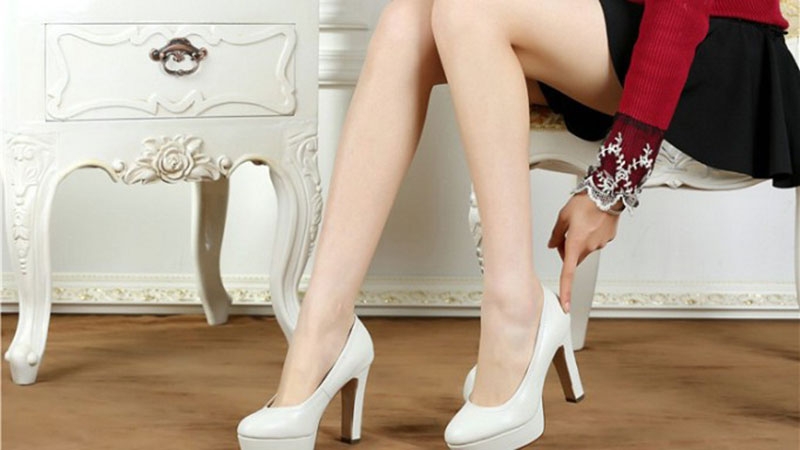 You should measure your shoe size before buying[/caption]
You should measure your shoe size before buying[/caption]
Choosing Shoes That Fit Your Foot Shape
Everyone has a different foot shape. Choose shoes that fit your foot shape to ensure comfort and fit. For example:
- Wide feet: Choose shoes with wide toes and flat soles.
- Long feet: Can choose shoes with pointed toes and high heels.
- Feet with high arches: Choose shoes with arch support soles.
- Flat feet: Choose shoes with sturdy soles that support the arch.
Choose Breathable Shoe Material
You should prioritize choosing shoes made from breathable materials such as genuine leather, canvas, mesh, etc. to help keep your feet dry and comfortable, avoiding stuffiness and moisture, creating conditions for bacteria and mold to grow.
In addition, Shondo currently has breathable shoes that help you move comfortably without fear of stuffiness or unpleasant odors such as:
[caption id="attachment_5120" align="aligncenter" width="800"]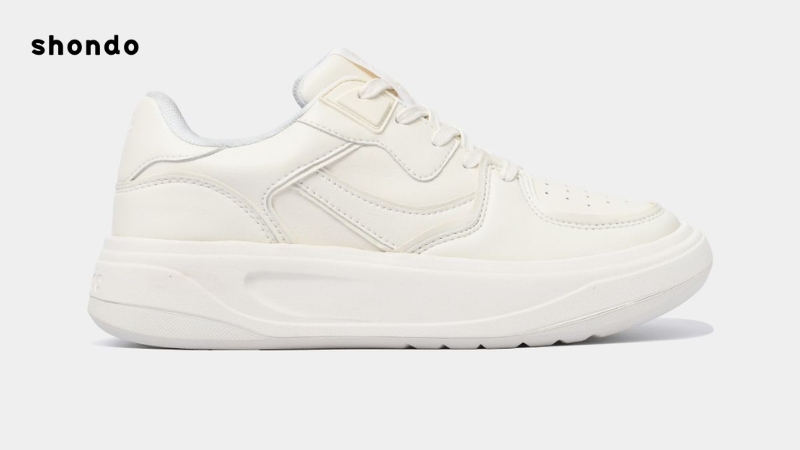 Sneaker Class 2 full white[/caption]
[caption id="attachment_5121" align="aligncenter" width="800"]
Sneaker Class 2 full white[/caption]
[caption id="attachment_5121" align="aligncenter" width="800"] 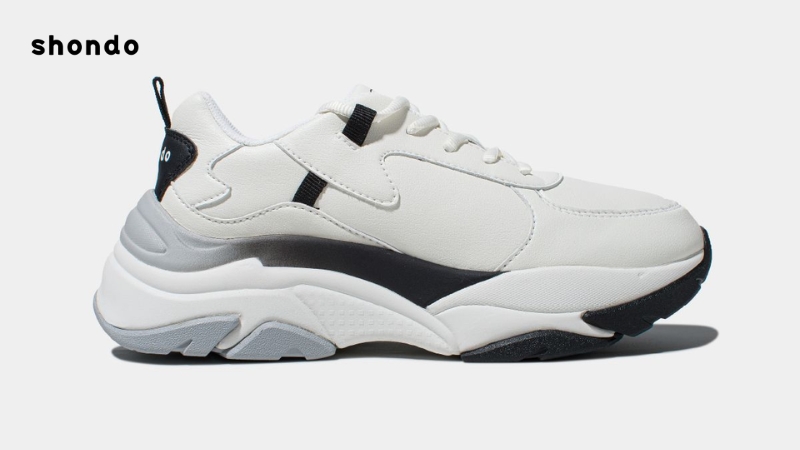 Sneaker S1 white with grey and black ombre sole[/caption]
[caption id="attachment_5118" align="aligncenter" width="800"]
Sneaker S1 white with grey and black ombre sole[/caption]
[caption id="attachment_5118" align="aligncenter" width="800"] 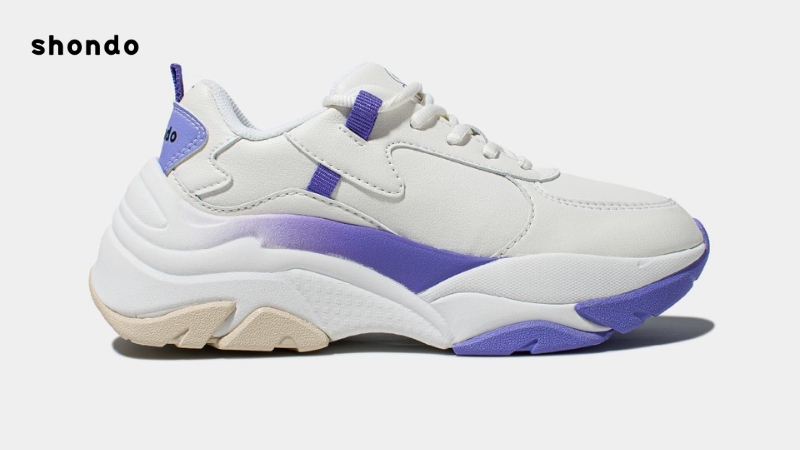 Sneaker S1 white with white and purple ombre sole[/caption]
Sneaker S1 white with white and purple ombre sole[/caption]
Try Shoes Carefully Before Buying
Always try on shoes thoroughly before you buy them. Walk around the store a few times to get a feel for how comfortable the shoes really are. Pay attention to how they feel in your toes, feet, and heels. If you notice any signs of tightness or rubbing, choose another pair of shoes.
Buy Shoes At The End Of The Day
Our feet tend to swell at the end of the day, so it is best to shop for shoes at the end of the day to ensure you get the best size.
Don't Wear New Shoes For Too Long The First Few Times
When you first buy shoes, you should not wear them for too long the first few times. Start by wearing them indoors or for short periods of time, then gradually increase the time you wear them. This will help your feet gradually adapt to the new shoes, avoiding pain and blisters.
[caption id="attachment_5119" align="aligncenter" width="800"]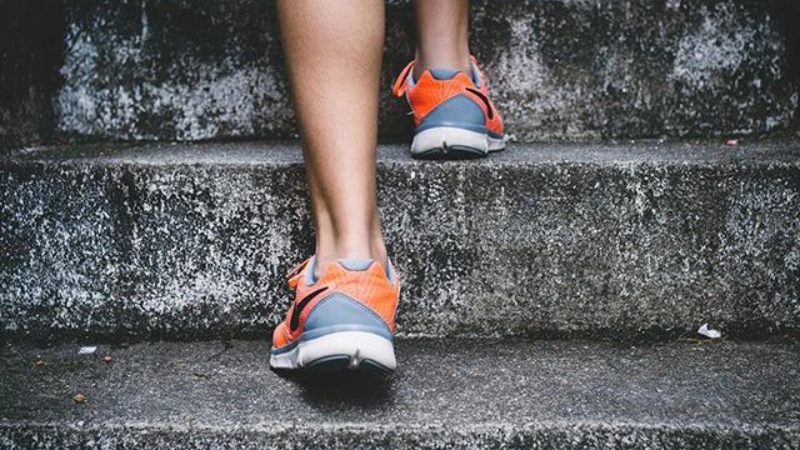 You should space out the time between wearing new shoes to avoid foot pain[/caption]
You should space out the time between wearing new shoes to avoid foot pain[/caption]
How to deal with tight shoes
If you happen to buy a pair of shoes that are too tight, don’t throw them away. Here are some tips to fix the problem:
- Using Shoe Stretcher
A shoe stretcher is a specialized tool that helps to expand the size of shoes. You can buy a shoe stretcher at a shoe store or use the stretching service at a shoe repair shop.
- Using Ice
Fill two ziplock bags with water, seal the bags, and place them inside the shoes, in the areas you want to stretch. Then, place the shoes in the freezer overnight. The ice will expand as it freezes, helping to stretch the shoe.
[caption id="attachment_5122" align="aligncenter" width="800"]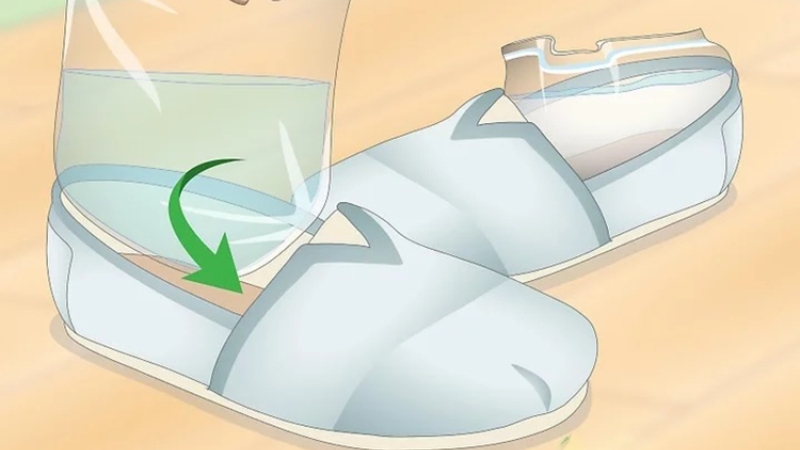 Use ice to help shoes expand[/caption]
Use ice to help shoes expand[/caption]
- Using a Hair Dryer
Put on thick socks and put on your shoes. Using a hair dryer, heat the areas you want to stretch. The heat will soften the material of the shoe, allowing it to stretch. After heating, continue wearing the shoes until they cool down.
- Using Old Newspapers
Stuff old newspapers inside your shoes, especially in the areas you want to stretch. Leave the shoes overnight, the newspaper will absorb moisture and help stretch the shoes.
- Wear Shoes Regularly At Home
Wearing shoes regularly at home is also a way to help shoes stretch naturally. You can combine wearing shoes with thick socks to increase the stretching effect.
Is it okay to wear tight shoes ? The answer is definitely YES. Wearing tight shoes not only causes pain and discomfort but also has many potential serious effects on the health of your feet. Therefore, choose shoes that fit well and are comfortable to protect your feet. If you are experiencing foot problems due to wearing tight shoes, see a specialist for timely advice and treatment.
Related Articles

Nếu bạn đã và đang sở hữu cho mình đôi giày ballet sneaker nhưng vẫn chưa biết outfit nào phù hợp. Xem ngay bài viết này với 5 cách phối đồ với giày ballet sneaker đẹp không có điểm trừ cùng Shondo...

Squid Game 3 chính thức khuấy đảo trên màn ảnh, bạn đã sẵn sàng ngồi liền 6 tập để xem cuộc chiến sinh tồn lần cuối của Gi-Hun chưa? Dưới đây là combo cuối tuần “chuẩn sinh tồn hiện đại” mà Shondo ...

Phong cách Retro là gì mà được nhiều người săn đón như vậy? Cùng Shondo tìm hiểu qua bài viết sau đây để biết thêm nhiều điều thú vị từ điểm đặc trưng cho đến cách phối đồ như thế nào là chuẩn nhé....

Một trong những trào lưu nổi bật gây sốt trên các cộng đồng yêu thời trang chính là phong cách Maillard. Nhưng điều gì khiến chúng lại có sức hút lớn đến như vậy? Shondo sẽ giúp bạn hiểu rõ hơn về...

Áo Polo nữ - item nghe thì tưởng già nhưng thực ra lại đang quay trở lại mạnh mẽ. Từ sân golf đến sân trường, từ văn phòng đến quán cafe, chiếc áo đơn giản với cổ bẻ đặc trưng này bỗng trở nên đa n...
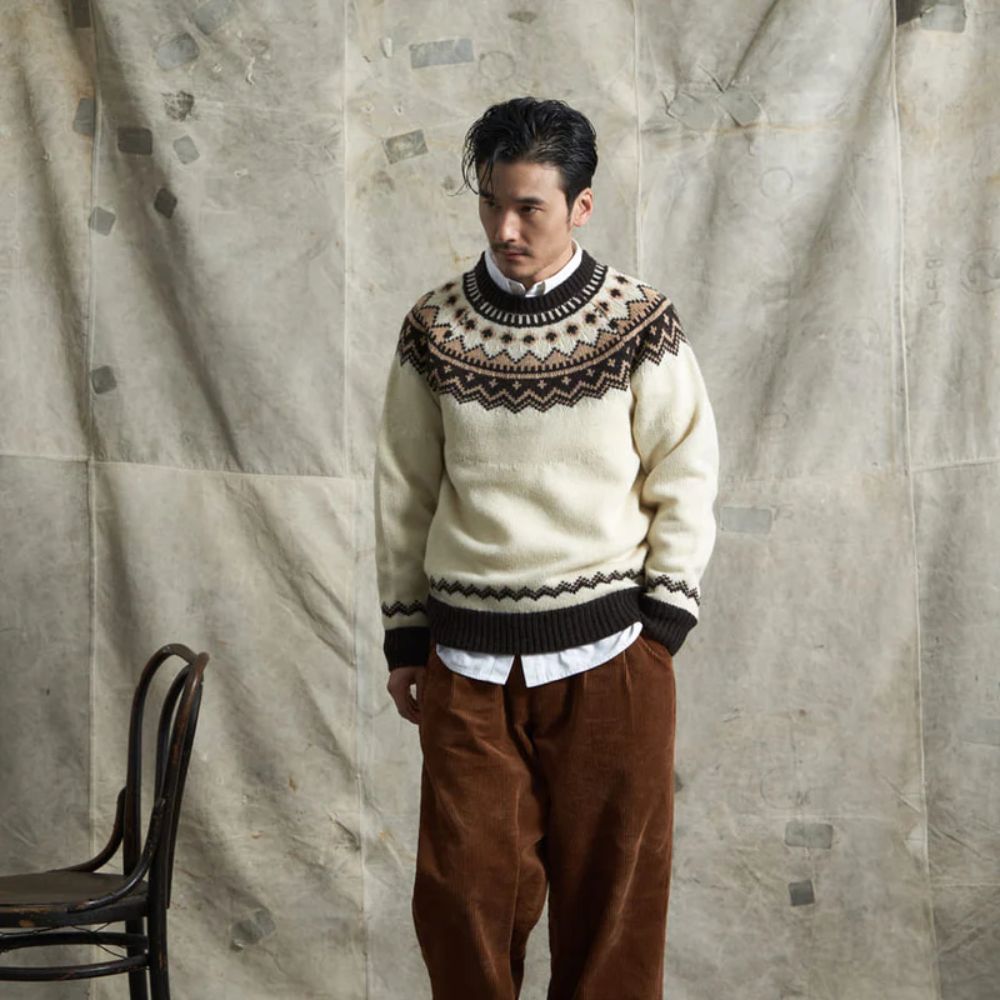
Phối đồ Vintage trong giới thời trang mang đến những nét độc đáo rất riêng. Phong cách này trở thành xu hướng phổ biến không chỉ ở nữ mà còn xuất hiện nhiều ở nam giới. Shondo sẽ cho bạn thấy điều ...

